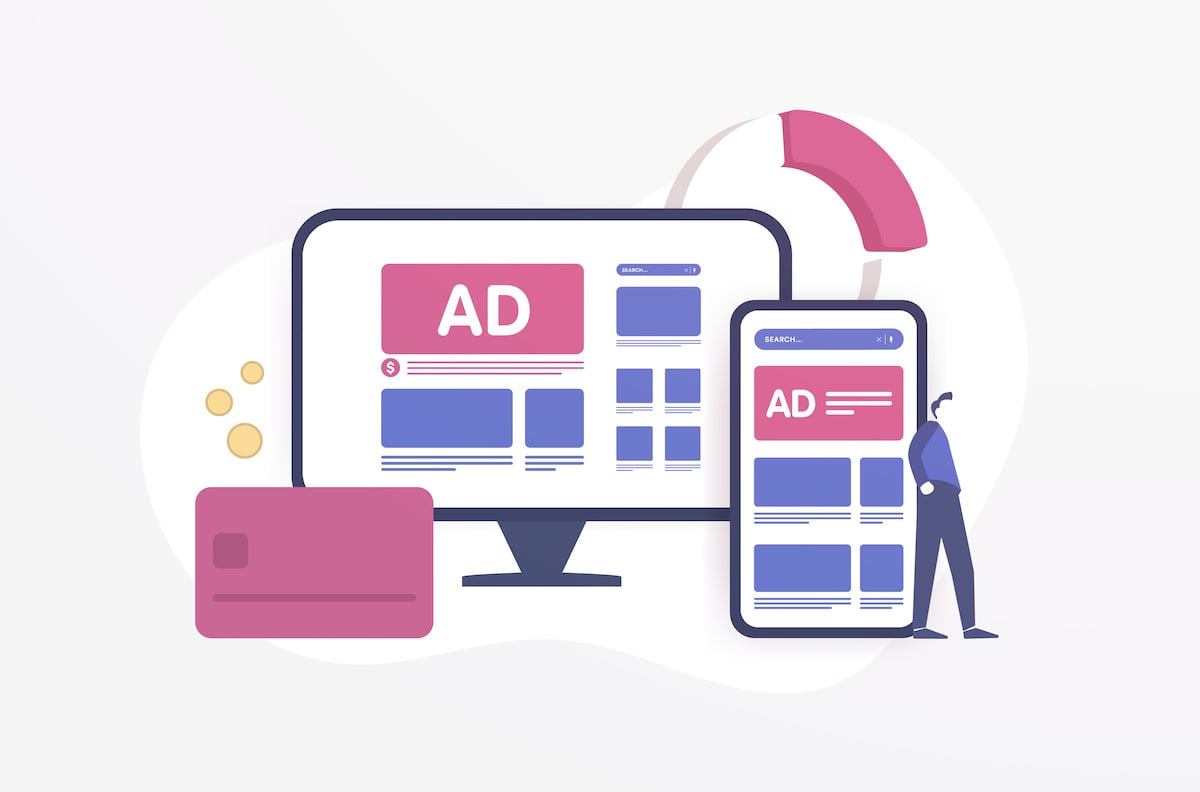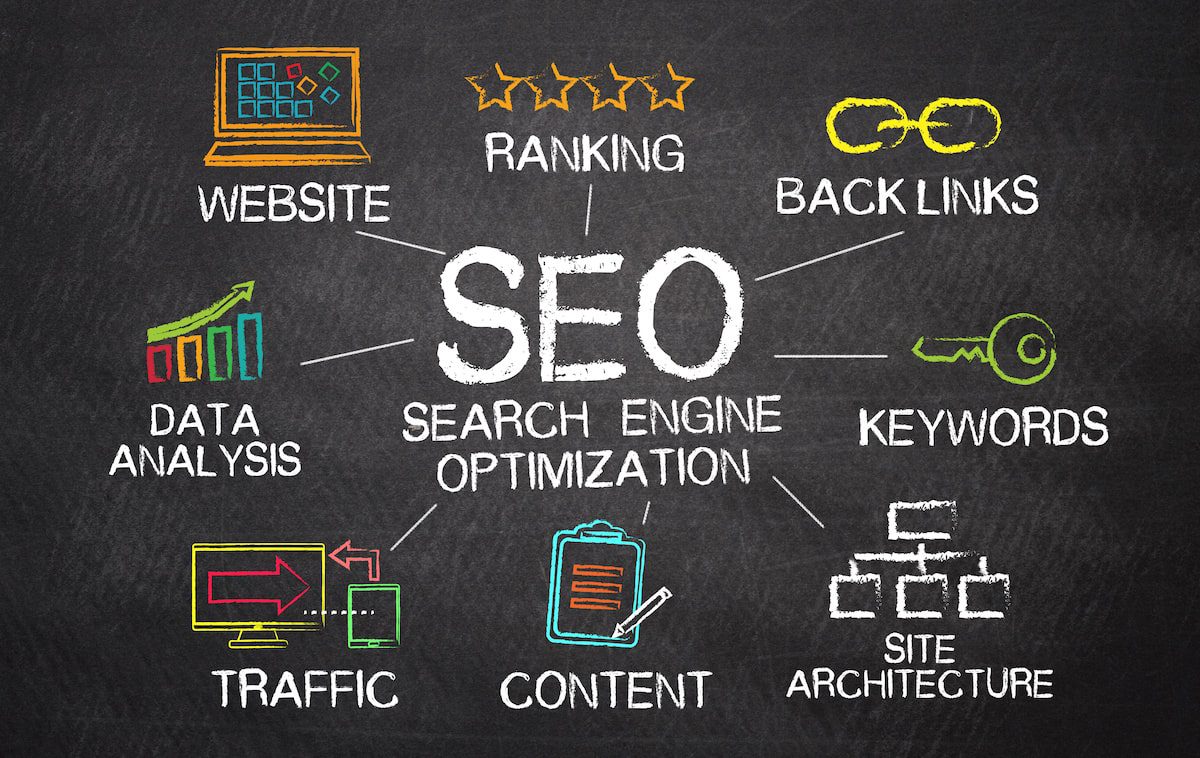Short-Term vs. Long-Term Marketing Strategy
- What is short-term and long-term in marketing?
- What are the goals for short-term marketing strategies?
- 3 examples of short-term marketing strategies
- What are the goals for long-term marketing strategies?
- 3 examples of long-term marketing strategies
- 5 Tips to Integrate Short-Term and Long-Term Digital Marketing Strategies
For years, marketers have been trying to answer an age-old question: how can you most effectively spend your budget in a way that drives maximum audience attention and conversion? The answer, of course, isn’t simple or straightforward. Part of the problem is that nothing in marketing is ever linear. Long-term successes drive sustainable growth, but you can’t wait for a year or more while those long-term efforts have time to come to fruition.
What do you do? For many organizations, the answer is short-term marketing investment. Digital ads sound great, can be launched in a day, and get instant attention. But they’re also not as sustainable as those longer-term initiatives.
So let’s end the complications once and for all. In this guide, we’ll cover the most important short-term and long-term digital marketing strategies, including their nuances and approximate timelines. From there, we’ll provide helpful tips on how you can prioritize between the two segments (and all the strategies that fall into them) to optimize your marketing budget for a reliable, consistent return on investment.
What is short-term and long-term in marketing?
Short-term strategies: The stepping stones along the way, the immediate gains that support your long-term goals. Think of it as taking smaller steps up the mountain to reach your destination. Imagine these actions:
- Driving website traffic: Attracting more visitors to your website or landing page. (Examples: Running paid advertising campaigns, optimizing your website for search engines, participating in social media contests).
- Increasing lead generation: Capturing contact information from potential customers. (Examples: Offering free downloadable resources, hosting webinars, running lead generation campaigns).
- Boosting conversions: Turning website visitors into paying customers. (Examples: Running limited-time sales promotions, offering special discounts, optimizing your checkout process).
Long-term strategies are your destination, the big picture, what you want to achieve over months or years. Think of it as building a strong foundation and climbing a mountain. Imagine these actions:
- Building brand awareness: Making your brand recognizable and familiar to your target audience. (Examples: Creating engaging social media content, running brand awareness campaigns, participating in industry events).
- Establishing brand authority: Becoming a trusted source of information in your field. (Examples: Publishing high-quality blog posts, conducting industry research, building relationships with influencers).
- Nurturing customer loyalty: Turning one-time buyers into repeat customers. (Examples: Implementing loyalty programs, offering personalized recommendations, providing excellent customer service).
Key Differences
- Timeframe: Long-term = Months/years, Short-term = Days/weeks
- Focus: Long-term = Brand building, Short-term = Immediate results
- Examples: Long-term = Content marketing, Short-term = Paid advertising
Ultimately, long-term goals are what keeps us moving forward. Building your brand’s voice, staking your claim as an expert in your industry, and creating engaging content are all long-term strategies.
But short-term strategies give us the quick wins, and serve as touchpoints along the way. Getting your content in front of people’s eyes, reaching your target audience and bringing them in, and increasing engagement are all short-term wins strategies.
What are the goals for short-term marketing strategies?
While capturing website traffic, conversions, and engagement are fundamental, let’s dive deeper and tailor them to actionable steps for new marketers:
Traffic Acquisition
- Targeted paid ads: Reach your ideal audience through platforms like Google Ads or Facebook Ads with laser-focused targeting options.
- SEO updates: Improve already-performing content so that it ranks even higher, raising your website’s ability to rank for relevant keywords to attract organic traffic.
- Social media promotions: Run contests, giveaways, or polls on social media to generate buzz and attract new followers who can convert into website visitors.
Conversion Optimization
- Landing page optimization: Design compelling landing pages with clear calls to action and eliminate distractions to increase conversion rates.
- Special offers and discounts: Provide limited-time promotions or exclusive discounts to incentivize immediate purchases.
- A/B testing: Experiment with different website elements like headlines, buttons, and forms to see what drives the most conversions.
- Personalized offers: Use website visitors’ data to tailor your messaging and offers to their specific needs and interests.
Engagement Boosting
- Interactive content: Share quizzes, polls, or live videos to encourage audience participation and build relationships.
- Community building: Foster discussions and respond to comments on social media to create a sense of belonging.
- Influencer marketing: Collaborate with relevant influencers to reach a wider audience and build trust through their endorsement.
- User-generated content: Encourage your audience to share their own experiences or creations related to your brand to increase engagement and authenticity.
By focusing on these specific and actionable goals, new marketers can move beyond generic terms and actually implement their short-term marketing strategies effectively. Remember, the key is to align your chosen strategies with your overall long-term goals for maximum impact.
3 examples of short-term marketing strategies
No shocker here: all of the strategies we’ll discuss with short-term results require at least some monetary investment on your end. In return, they get almost instant results, allowing you to quickly raise your organization’s profile. They also tend to be targeted, helping you reach a specific audience (or even audience segment) exactly as intended.
1. Search Engine PPC Ads
We start with search engine PPC (pay-per-click) ads, which are text-based messages that appear near the top of search results for relevant terms. Search PPC ads are almost instant: the day you set them up, including a budget and creative, they’ll go live and start delivering for your audience.
PPC advertising draws funds from your budget only when someone actually follows through and clicks to your website. On average, you can expect to pay about $2.50 per click, although that number fluctuates drastically by industry and keywords. In other words, a $5,000 campaign can result in about 2,000 clicks to your website.
Search ads are targeted by keywords and phrases, providing significant leeway in terms of targeting. If you know what terms your audience tends to search for or perform some basic keyword research, your messaging can get in front of your audience as they use Google or Bing, two of the most-visited websites in the United States.
As a short-term marketing tactic, search engine PPC ads come with a few core advantages:
- Almost instant results, if you measure results in exposure or website visits.
- Integration with Google Analytics allows for in-depth tracking of lead and customer conversions.
- Specific, keyword-based targeting that can get your message in front of a high-intent audience.
In short, it can help to kickstart awareness of a new web presence, building traffic quickly while organic visitors through SEO or other tactics still play catch-up.
However, search ads also tend to be expensive compared to the other strategies on this list. They’re also hit-or-miss, while taking time to evaluate honestly. If you don’t target the right keywords or focus on the wrong messaging, you might spend a significant part of your budget before knowing that you’re going in the wrong direction.

2. Social Media Ads
Next up in the short-term strategy space are social media ads, typically placed in the news feeds of popular networks like Facebook, LinkedIn, Twitter, and Instagram. These ads are designed to match the news feed, save a sponsored label that denotes them as ads. As a result, they’re less intrusive, while still potentially providing instant results.
Social media ads can take a variety of forms, featuring videos or static visuals to maximize audience attention. Like search ads, they are PPC, but tend to be much more visual and engaging as a result. They’re also quick to set up, and can be live within a day, making them another short-term marketing tactic of choice.
Unlike search ads, though, sponsored messages on social media are typically targeted not based on intent, but one of three core targeting options:
- Behavioral targeting, sending your ads only to users of the platform with specific interests, demographics, and behaviors.
- Custom audience targeting, through uploading a list of leads or customers that match user profiles on your network of choice.
- Remarketing, showing your social media ads to recent website visitors or app users.
This marketing tactic combines instantaneous results with extremely low cost. Across industries, for instance, the average cost per click on Facebook is about $0.23 in the United States. Unfortunately, those clicks aren’t always relevant, so conversion rates for clicks from Facebook ads tend to be relatively low.
Still, this is another good short-term tactic to pursue. If you just have a demographic profile of your audience, and a budget as low $5 per day, you can quickly set up a social media ad campaign to attract new audiences.
[Read our case study on how we grew leads with customized Facebook audiences.]
3. Programmatic Display Ads
Finally, display ads are the third type of common short-term tactic leveraged by many businesses and industries. They’re static or animated banners displayed on networks that include some of the world’s most popular websites. The Google Display Network, for instance, reaches 90% of the world’s internet traffic.
Programmatic advertising can be targeted in a variety of ways:
- Based on keywords, typically keywords that appear on websites your audience frequently visits.
- Remarketing, based on a pixel that you place on your website so your display ads can ‘follow’ visitors when they browse other websites.
- Advanced targeting options like geofencing, which allows you to draw a narrow radius around specific areas (such as a shopping mall) to reach your audience while inside.
The technical setup of programmatic display campaigns can be just as fast as the other two short-term tactics above. However, prep time tends to be longer, because you’ll need to plan in at least some graphic design to create the actual ad. Unlike search, where you only need text, and social, which adds an image, display ads only work when designed as graphics with multiple design components.
Still, this counts as a short-term tactic because, once live, those ads start delivering results quickly. It’s especially relevant for awareness-based marketing goals; the reach is comparatively high, and the cost per click tends to be lower than either of the other two options described above.
[Read our case study on how we used programmatic advertising to increase conversions by 121%.]

What are the goals for long-term marketing strategies?
While the listed goals provide a good starting point, let’s explore how new marketers can translate them into concrete long-term actions:
SERP Rankings Growth
- Publish new content continuously: Google likes to see websites that are updated frequently. Continue to post new content that’s driven by a cohesive SEO strategy designed to support your other marketing channels.
- Backlink building: Acquire high-quality backlinks from reputable websites in your industry to improve your website’s authority and ranking.
- Regular content updates: Consistently publish fresh, relevant content to maintain user engagement and signal activity to search engines.
Social Media Growth
- Consistent content calendar: Publish engaging content across relevant platforms, catering to each platform’s specific audience and format preferences.
- Community management: Actively engage with your audience, respond to comments and messages, and foster a sense of community.
- Collaboration and partnerships: Partner with other brands or influencers in your industry to reach new audiences and gain exposure.
User Experience Optimization
- Usability testing and analysis: Regularly test your website’s usability to identify and address user pain points, reducing bounce rates and improving user experience.
- Accessibility: Ensure your website is accessible to all users, regardless of their abilities, to expand your reach and build inclusivity.
- Personalization: Utilize user data to personalize website experience and content recommendations, enhancing user engagement and satisfaction.
Industry Credibility
- Thought leadership content: Share your expertise through insightful blog posts, white papers, or industry reports, demonstrating your knowledge and value.
- Industry awards and recognition: Seek nominations and actively participate in relevant industry awards to gain recognition and establish credibility.
- Building relationships with experts: Network with other professionals in your field, collaborate on projects, and participate in industry discussions.
Remember, these are just a few examples, and the specific actions you take will depend on your industry, target audience, and resources. The key is to focus on building a strong foundation through high-quality content, continuous improvement, and strategic partnerships. By consistently working towards these long-term goals, you can establish a sustainable and impactful online presence for your brand.
3 examples of long-term marketing strategies
While the above tactics are designed for short-term successes, that’s not the whole picture. It’s just as important to build long-term strategies designed to help your business keep growing, with or without budget.
These tactics take a while, but the wait and effort are worth it. Search engine optimization, organic social media, and content marketing are three of the top 4 marketing channels for ROI in a recent marketing survey. Together, they can go a long way towards sustainable business success.
1. Search Engine Optimization
We’ve written at length about search engine optimization (SEO), which can make a major business difference. It’s the process of optimizing your website — its content as well as its structure and code — to optimize your rankings on relevant keywords for Google (and other search engine) searches.
SEO is the ultimate long play. You’ll need at least six months to start seeing results, and the best-ranking websites in competitive industries have spent years perfecting the craft. Once you get it right, though, the marketing results tend to be immense: according to some experts, you can expect to see $3 or more in business revenue for every dollar spent.
Implementing a cohesive SEO strategy, of course, is anything but easy. It requires an expert understanding of your audience’s search behaviors as well as your industry before you start. From there, you need a content strategy, ongoing website backend optimization, and a reliable way to keep building your inbound links. The low cost of the strategy is offset by the high requirement in time and expertise.
Still, it’s one of the core marketing strategies used across industries today for a reason. With Google accounting for more than 50% of all web traffic today, a prominent placement on search results can make all the (long-term) difference to get the word out about your brand.

2. Organic Social Media
Just like SEO is the long-term equivalent of search PPC ads, organic social media is the long-term counterpart to social media ads. Put simply, it’s the process of building an engaging, interactive, and popular presence on the social media networks your audience tends to spend their time on.
Organic social media marketing typically includes three distinct components:
- Publishing, the process of regularly pushing out content that’s relevant and engaging for your audience.
- Community management, which includes responding to comments and reviews to turn your presence into a two-way engagement street.
- Social listening, which includes paying attention to relevant industry conversations and chiming in where appropriate to build your credibility and responsiveness.
Combine the three, and you’re well on your way to turning your social media presence into an important part of your marketing strategy. But getting there takes time. On average, expect to spend between six and twelve months building your presence before you begin to see tangible business results.
3. Content Marketing
The final long-term strategy we’ll discuss here is content marketing, which can actually incorporate components from all of the tactics mentioned above. It’s the process of turning your website into a hub full of high-quality content, including relevant blog posts, articles, whitepapers, and other pieces that draw attention to your online presence and, ultimately, your organization’s core offering.
Content marketing is a complex process. Each of the types of content mentioned above has unique applicability in marketing terms:
- Blog posts can help your SEO through optimization on specific keywords.
- Whitepapers can become lead-generating machines designed to draw your audience through free sign up forms.
- Brand storytelling videos can be effective on social media as well as your website.
As a result, it takes time. To be exact, you can expect to need about six to nine months of hard work to start seeing tangible marketing results. But once you get there, it pays off big time: compared to traditional marketing tactics, content marketing costs about 62% less while generating three times as many leads.
5 Tips to Integrate Short-Term and Long-Term Digital Marketing Strategies
As you read through these short-term and long-term marketing strategies, one thing is crucial to remember: none of them work well in isolation. Instead, they all need to be integrated to result in optimal marketing results. Fortunately, you can help to make that happen through these five tips.
1. Stay True to Your Marketing Goals
This one is simple, but important nonetheless. Always start a marketing strategy with your goals before getting into the tactics. Understanding exactly what you want to achieve can go a long way towards finding the ways to achieve it.
2. Optimize for Audience Preferences
Do you know what types of channels your audience likes to frequent and how they typically behave online? For instance, the use of ad blockers goes up significantly for younger internet users, making tactics like social media or display ads difficult to execute. Understanding your audience, as well as their preferences, can help you find the short-term and long-term strategies that work best for you.
3. Drive Short-Term Strategies Towards Long-Term Efforts
Here’s one way to think about the short-vs-long split: one can help to accelerate the other. To provide just a few examples:
- Results and insights from your search ads can help you better optimize your SEO keyword strategy.
- Social media ads can help you test the types of visuals your audience responds to on each network.
- You can leverage your ads to drive traffic to your core content, maximizing its effectiveness and visibility.
4. Build Your Strategy With Your Budget and Expertise in Mind
The budget ranges required for the above tactics vary greatly. So does the expertise required to implement them. In fact, both your budget and your expertise separately may prevent you from fully optimizing for one of them. As you build your marketing strategy, make sure you know exactly what budget you have available, and what your capabilities look like.
5. Work With a Reliable Digital Marketing Partner
Finally, it helps to work with someone who doesn’t just understand the above tactics, but also knows how to integrate them for maximum results. Remember that the whole in digital marketing is always greater than the sum of its parts, and results tend to be exponential. A reliable partner can help you build your strategy with a balanced mix of long-term and short-term digital strategies.
If you’re looking for that partner, we’d love to talk. Our digital marketing services are designed to be integrated, offering not just channel-specific expertise but the larger picture as well. Contact us today to start a conversation, and to begin the journey of optimizing not just for the short-term or the long-term, but both in equitable measure.



